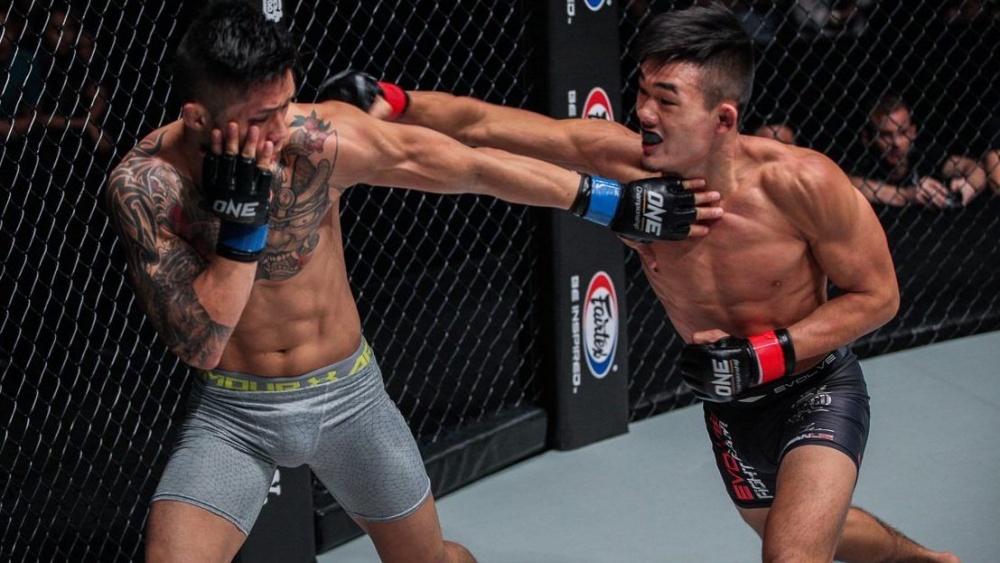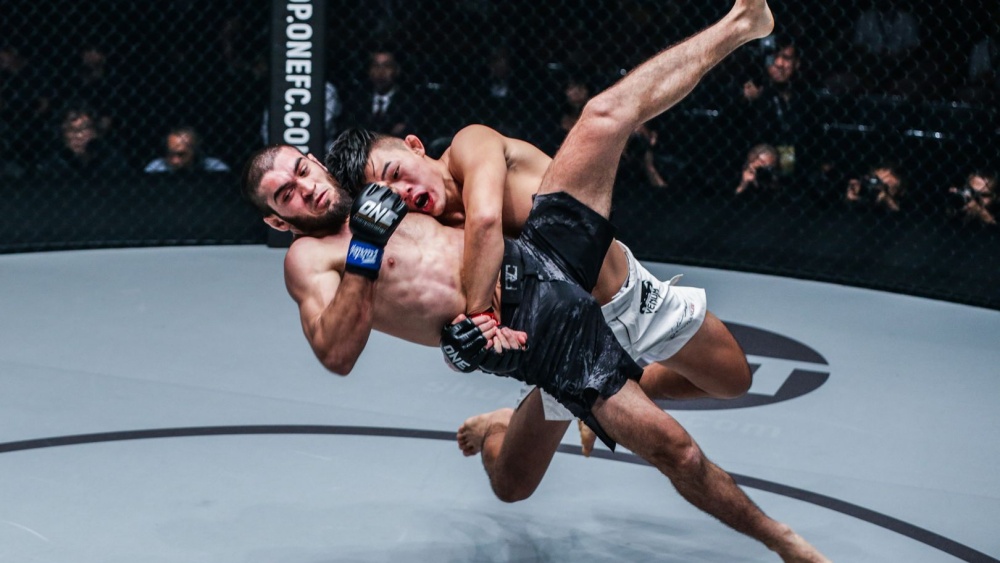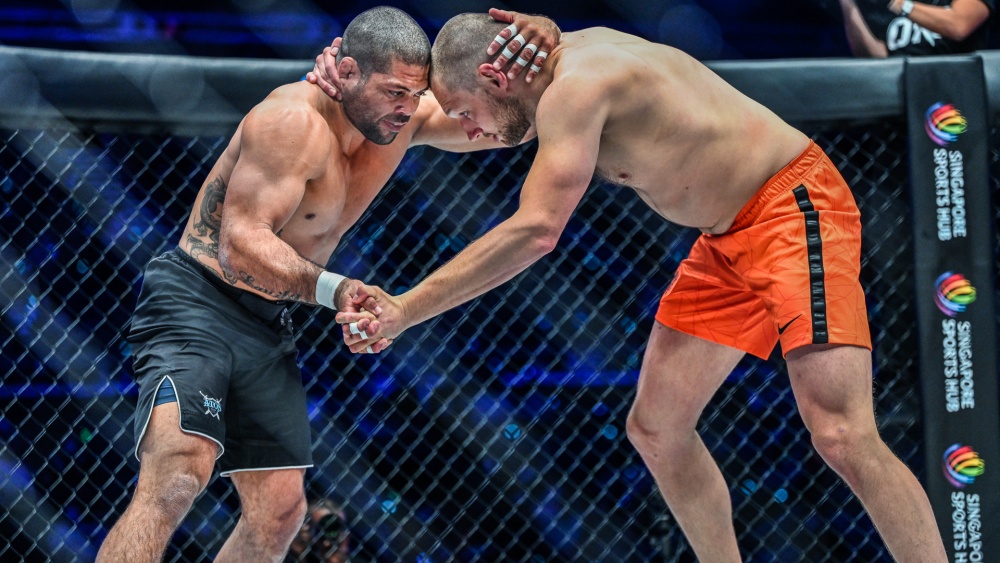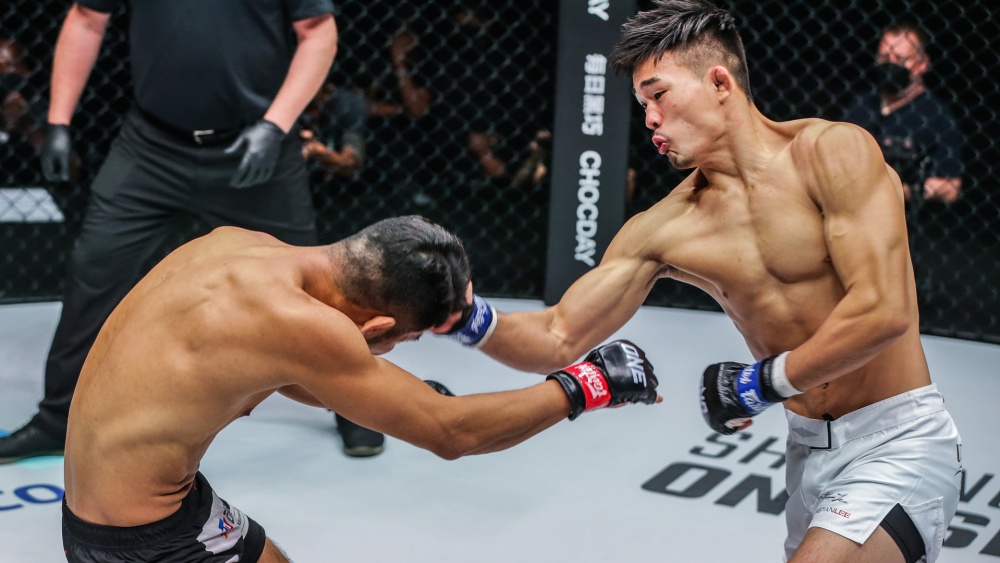Striking is an essential aspect of another MMA fighter’s arsenal. Although grappling is a powerful tool, all MMA fights start with both fighters standing facing each other. Even a skilled, veteran grappler needs some competency in striking in order to make their wrestling work in MMA. Skilled strikers can avoid the clinch and grappling range by using their strikes to maintain distance and discourage opponents from shooting takedowns. Today, Evolve Daily is pleased to share a guide on how to train for fluidity in striking for MMA.
Striking Style
Developing your striking style around your individual physique and strengths will yield the best results for you as a fighter. This doesn’t mean you are boxed into a style you dislike; rather, developing your natural strengths while shoring up any weaknesses will let you maximize your striking potential. There are many considerations when crafting your striking style. The first is your height-to-weight class ratio.
1) Tall Physique
If you are a taller fighter for your weight class, you ideally want to stand a little taller, forcing your opponents to punch up at you. This can diminish their power as it is much more difficult to punch upwards than at your own head level. This will naturally make your stance narrower than a fighter that is shorter and stockier.
An example of a fighter with this build is Corey Sandhagen. He uses his height to his advantage and fights from the outside while switching stances to create angles.
2) Short Physique
A shorter, more compact body type lends itself well to a slightly wider stance. A lower stance allows you to explode more with your footwork and strikes, as well as assist in your head movement. A shorter fighter will usually not be able to fight from the outside as effectively, as their wingspan is often less than taller fighters; however, they are much more powerful when fighting in the pocket. The footwork they use varies from a taller fighter as well.
https://www.youtube.com/watch?v=bPIJjEkfUwM&ab_channel=antonboA
Shorter fighters utilize head movement combined with explosive footwork to close the gap into their favored range. A stellar example of a shorter fighter who fights using their physique to their advantage is Petr Yan. He uses his high guard, head movement, and switching footwork to close the gap into boxing range where he has the advantage.
Your cardio and strength levels also play an important role in crafting your unique striking style. If you have world-class cardio, like Nate Diaz or Max Holloway, but lack one-shot knockout power, you may want to emulate parts of their striking style. Using flurries of light punches and volume can overwhelm your opponents.
In contrast, fighters like Francis Ngannou or Derrick Lewis have much heavier strikes but lack the cardio capacity of high-volume strikers. They would be better served by throwing fewer strikes and finding the gaps in their opponent’s defense to land their knockout blows.
Once you have determined your fighting style, the next step is to improve your distance management. For a taller, lankier fighter, fighting from medium to long range will be more favorable. In contrast, a shorter, stockier fighter will often find more success in the medium to short ranges. A taller fighter can land their kicks from a distance and use them to set up punches mid-range. An example of this would be throwing teeps or low kicks from long range, followed by a combination of punches. The initial kick allows the taller fighter to engage their opponent without running into a counter strike and lets them close the gap into punching range. Due to the taller fighters’ longer limbs, they should be able to punch their opponent at a distance where their opponent’s punches cannot quite land.
A shorter fighter can use the same tactics but will have to alter them slightly to suit their build and fighting style. A teep or low kick can get a shorter fighter into punching range, but they will have to close more distance to get to the inside. Once inside the taller fighter’s reach, the shorter fighter now has the advantage. They are able to get more leverage on hooks and uppercuts to the body and head. Naturally, the taller fighter will attempt to move backwards or lateral to re-establish their preferred range. The shorter fighter can throw a roundhouse to their opponent’s legs or body to cut them off and continue the fight in their own preferred range.
Balance is an integral aspect of striking, and contributes to your power and speed. Being balanced will help you string together multiple strikes in combination. When throwing punches, especially power shots with your rear hand, don’t let your head pass your lead knee. This will ensure that you won’t be “stuck” after you throw a power punch, which also helps you avoid any counter punches your opponent throws.
Improving your balance will also let you kick harder and faster, all while using less energy per kick. Practice keeping your rear foot planted with the heel down when you throw your lead teep. This keeps your weight primarily on your back foot, allowing you to deliver a hard teep to your opponent’s body with minimal effort on your part. To optimize your balance even further, try to keep your head directly above your rear leg as you deliver the teep. Try this technique in shadowboxing and on a heavy bag to feel the difference in power and speed. Muay Thai legend Samart Payakaroon explains further in the video above.
Striking Variety
Once you have developed balance in your individual strikes, it’s time to tie it all together to overwhelm your opponents. Use kicks and feints to enter punching range, then unload a combination before exiting the pocket or initiating a clinch. Set traps for your opponent by repeating striking patterns in a specific way before breaking the pattern to strike them from an unexpected angle. A classic example of this is using a body jab throughout the fight or sparring session. Once your opponent drops their guard to block the body jab, feint it again and throw a rear overhand at their head. Another effective feint is to get your opponent used to your lead teep. You can then lift your lead knee as a feint, hopping into boxing or clinch range.
Striking is a very deep topic within the scope of MMA. While we have only scratched the surface of striking, we hope these tips help you develop fluidity in your own striking style. Practice these in your solo training, on the heavy bag and shadowboxing, to see your striking level up!
You may also like:


















